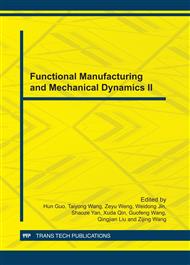p.239
p.244
p.251
p.258
p.264
p.270
p.275
p.279
p.284
Error Analysis and Calibration of Gyro-Stabilized Platform for Electro-Optical Pointing System
Abstract:
A novel method in the solution of the pointing problem for electro-optical pointing system (EOPS) is presented in this paper. Firstly, the error sources are analyzed in detail. And then, a linear model whose parameters have definitely physical meaning is developed to improve pointing accuracy. Extensive experiments have been carried out and the results show that the system errors can be eliminated by the model effectively and the pointing accuracy of the azimuth and elevation axes have been improved from 0.4541º and 0.2959º to 0.038º and 0.031º respectively.
Info:
Periodical:
Pages:
264-269
Citation:
Online since:
November 2011
Authors:
Price:
Сopyright:
© 2012 Trans Tech Publications Ltd. All Rights Reserved
Share:
Citation:


